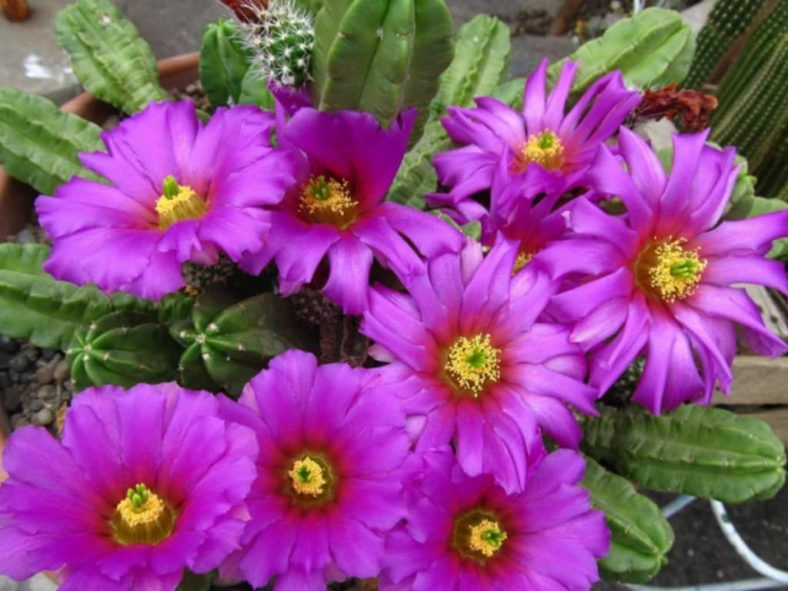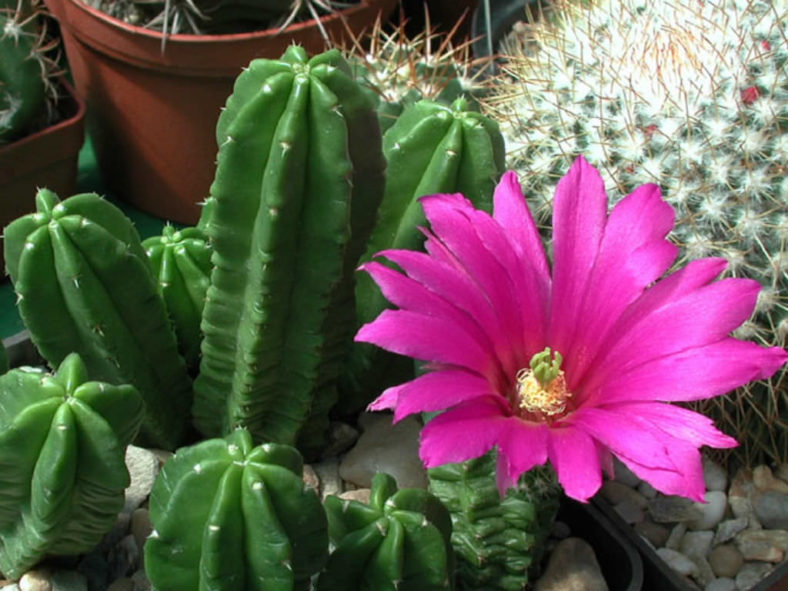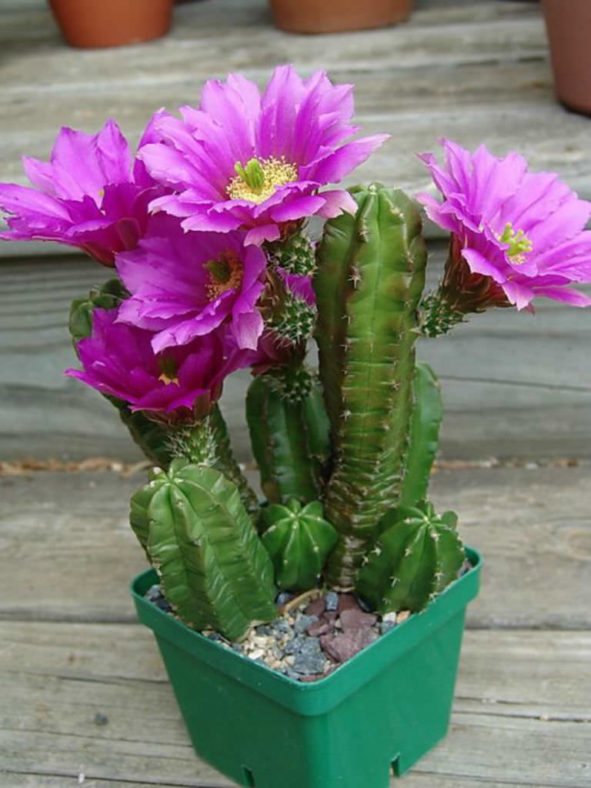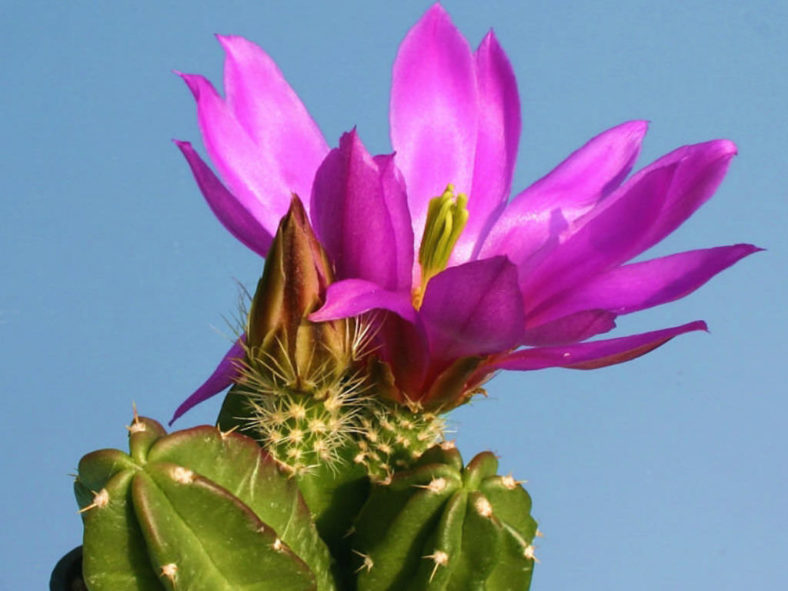Scientific Name
Echinocereus viereckii subsp. morricalii (Ríha) N.P.Taylor
Synonym(s)
Echinocereus morricalii, Echinocereus viereckii subsp. huastecensis, Echinocereus viereckii var. morricalii
Scientific Classification
Family: Cactaceae
Subfamily: Cactoideae
Tribe: Pachycereeae
Genus: Echinocereus
Etymology
The specific epithet "morricalii" (pronounced "IN-gens") honors Dale Morrical (1908-1994), a US-American electronic technician and cactus amateur.
Origin
Echinocereus viereckii subsp. morricalii is native to Mexico (Nuevo León).
Description
Echinocereus viereckii subsp. morricalii is a highly branched cactus with yellowish-green to bright green, almost spineless stems with 6 to 7 ribs. It branches profusely at the base, forming a dense clump over time. The stems are initially erect, later sprawling, and can grow up to 20 inches (50 cm) long and 3 inches (7.5 cm) in diameter. They take on purple hues in full sun. During the winter rest, the stems become wrinkled from lack of water. Spines, if present, are very short and yellowish.
The bright magenta flowers are funnel-shaped, appear in spring, and can reach a diameter of 4 inches (10 cm).

How to Grow and Care for Echinocereus viereckii subsp. morricalii
Hardiness: USDA hardiness zones 9b to 11b: from 25°F (-3.9°C) to 50°F (10°C).
If you can grow other globular cacti, you can most likely grow Echinocereus well. One of the key factors in success with these is avoiding any hint of wet soil. Because their root systems are weak, they are especially prone to root rot, which can eventually kill your plant. Otherwise, they thrive on a program of intense bright light, little water, and a steady diet of light fertilizer. These cacti are vulnerable to mealybugs and aphids.
Echinocereus are slow-growing cacti that should only need repotting every other year or so. You can prolong the time to repotting by removing plantlets and potting them up in their own pots. When repotting a cactus, remove it from its pot and remove any clumped soil. These plants tend to be shallow-rooted with weak root systems, so take care not to damage their roots.
Learn more at How to Grow and Care for Echinocereus.
Links
- Back to genus Echinocereus
- Succupedia: Browse succulents by Scientific Name, Common Name, Genus, Family, USDA Hardiness Zone, Origin, or cacti by Genus
Photo Gallery
Click on a photo to see a larger version.


